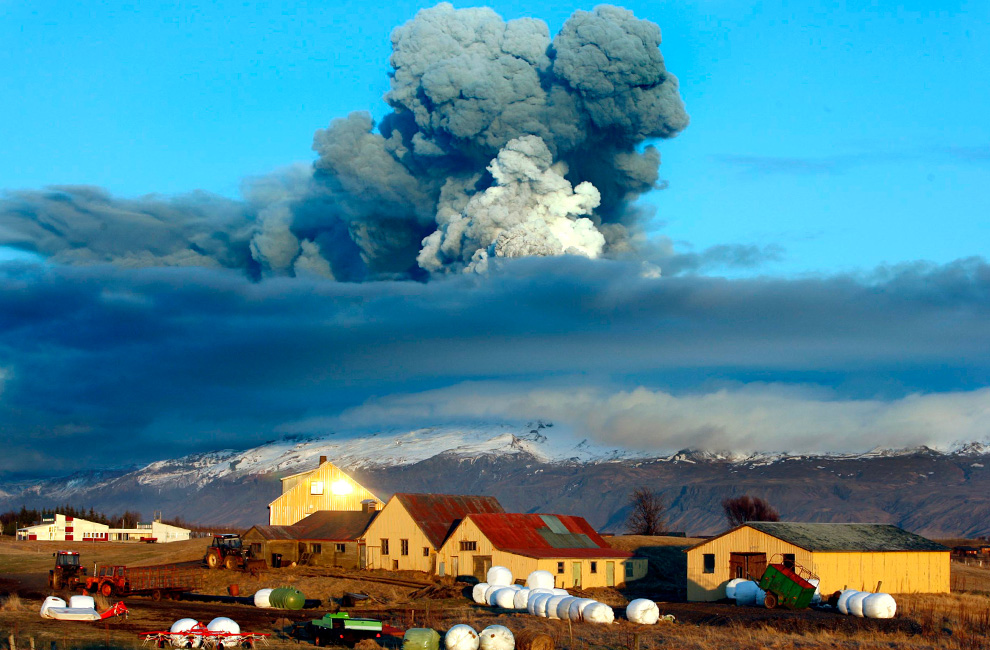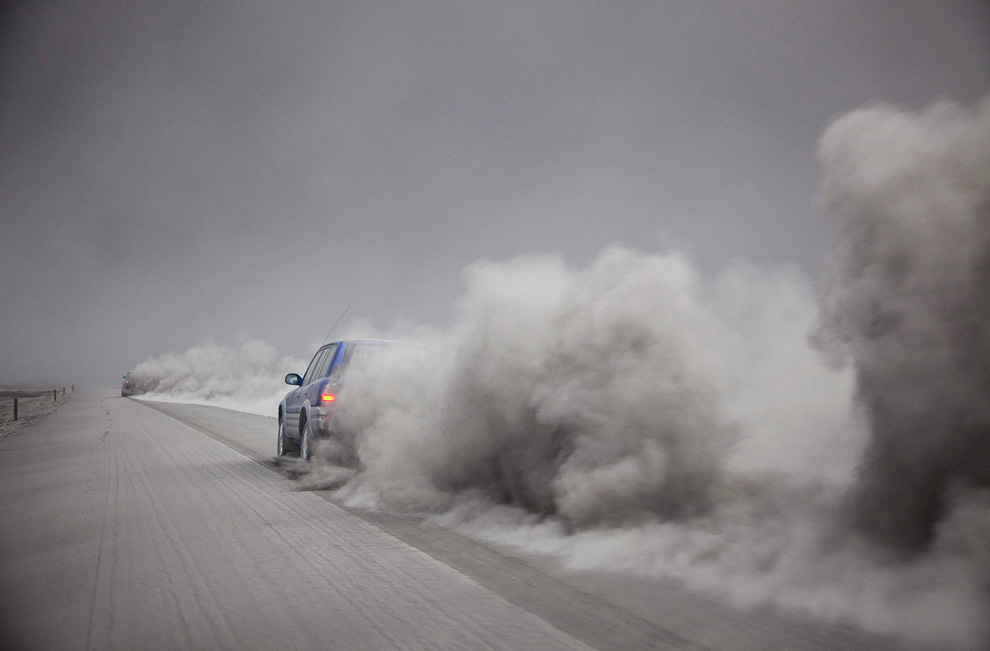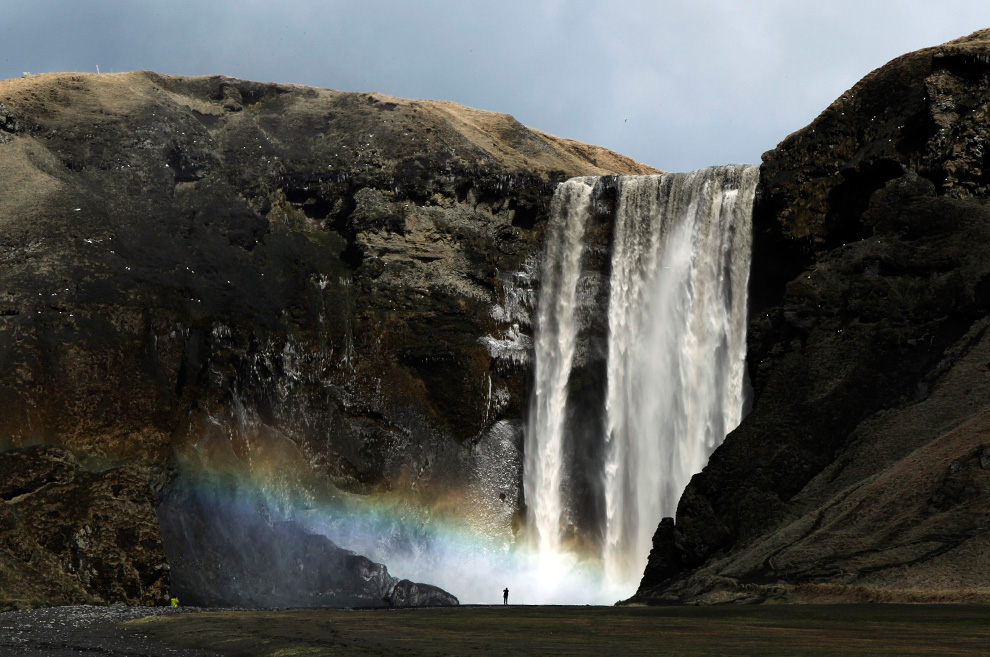As ash from Iceland's Eyjafjallajokull volcano continued to keep European airspace shut down over the 17th & 18th April weekend, affecting millions of travellers around the world, some government agencies and airlines clashed over the flight bans. Some restricted airspace began to open up and some limited flights were allowed now as airlines pushed for the ability to judge safety conditions for themselves. The volcano continues to rumble and hurl ash skyward, if at a slightly diminished rate now, as the dispersing ash plume has dropped closer to the ground, and the World Health Organization has issued a health warning to Europeans with respiratory conditions. Collected here are some images from Iceland over the past few days. And you can see a total of 35 photos here.
The volcano in southern Iceland's Eyjafjallajokull glacier sends ash into the air just prior to sunset ON Friday, April 16, 2010. Thick drifts of volcanic ash blanketed parts of rural Iceland on Friday as a vast, invisible plume of grit drifted over Europe, emptying the skies of planes and sending hundreds of thousands in search of hotel rooms, train tickets or rental cars. (AP Photo/Brynjar Gauti)
A car is seen driving near Kirkjubaejarklaustur, Iceland, through the ash from the volcano eruption under the Eyjafjallajokull glacier on Thursday April 15, 2010. (AP Photo/Omar Oskarsson)
This aerial photo shows the Eyjafjallajokull volcano billowing smoke and ash on April 17, 2010.
(HALLDOR KOLBEINS/AFP/Getty Images)
A woman stands near a waterfall that has been dirtied by ash that has accumulated from the plume of an erupting volcano near Eyjafjallajokull, Iceland on April 18, 2010. (REUTERS/Lucas Jackson)
The ash plume of southwestern Iceland's Eyjafjallajokull volcano streams southwards over the Northern Atlantic Ocean in a satellite photograph made April 17, 2010. The erupting volcano in Iceland sent new tremors on April 19, but the ash plume which has caused air traffic chaos across Europe has dropped to a height of about 2 km (1.2 mi), the Meteorological Office said. (REUTERS/NERC Satellite Receiving Station, Dundee University, Scotland)
No copyright infringement intended. For educational, non-commercial purposes only.





No comments:
Post a Comment
Note: Only a member of this blog may post a comment.